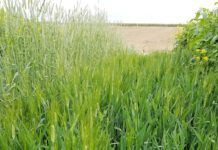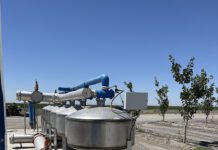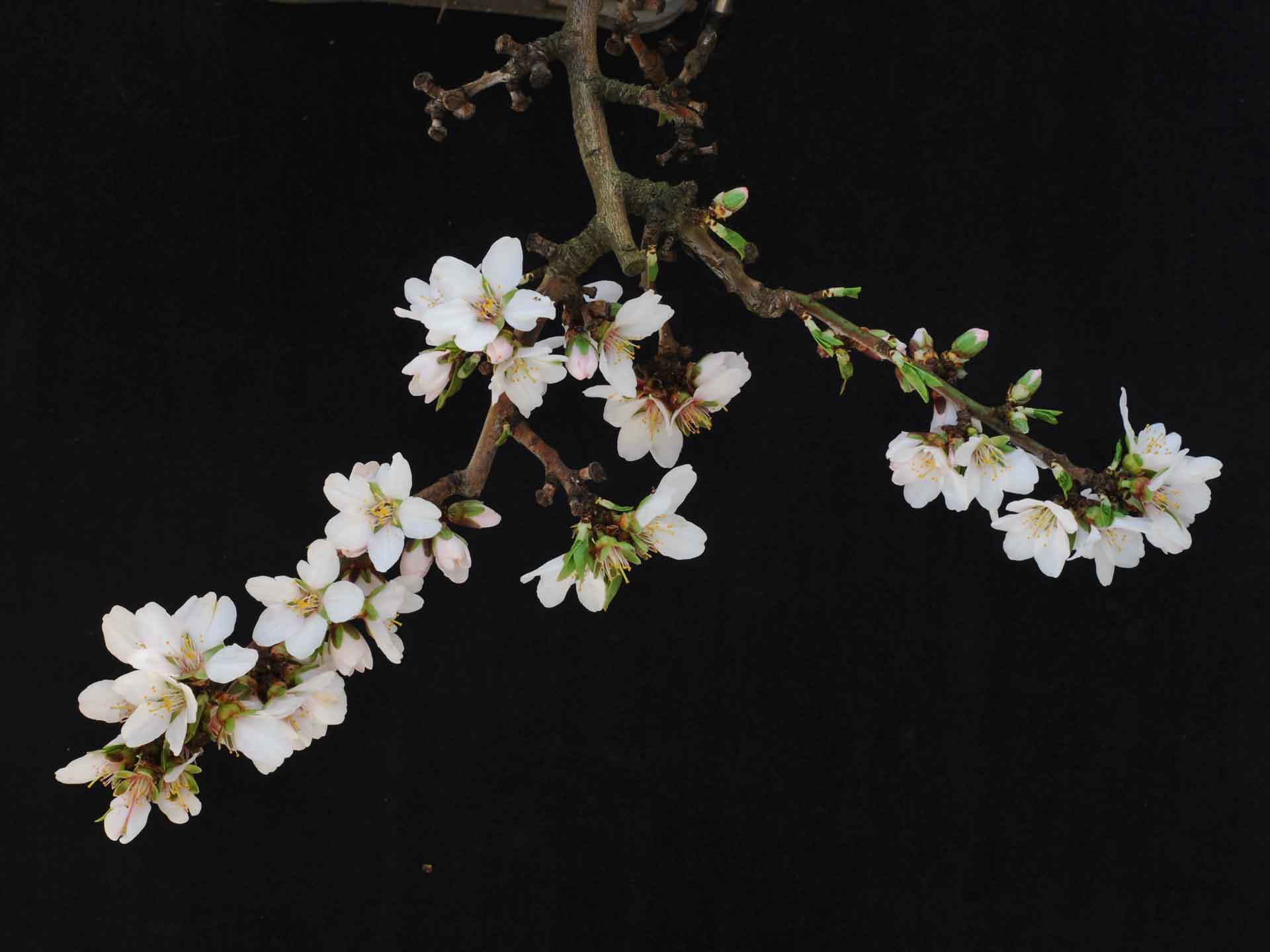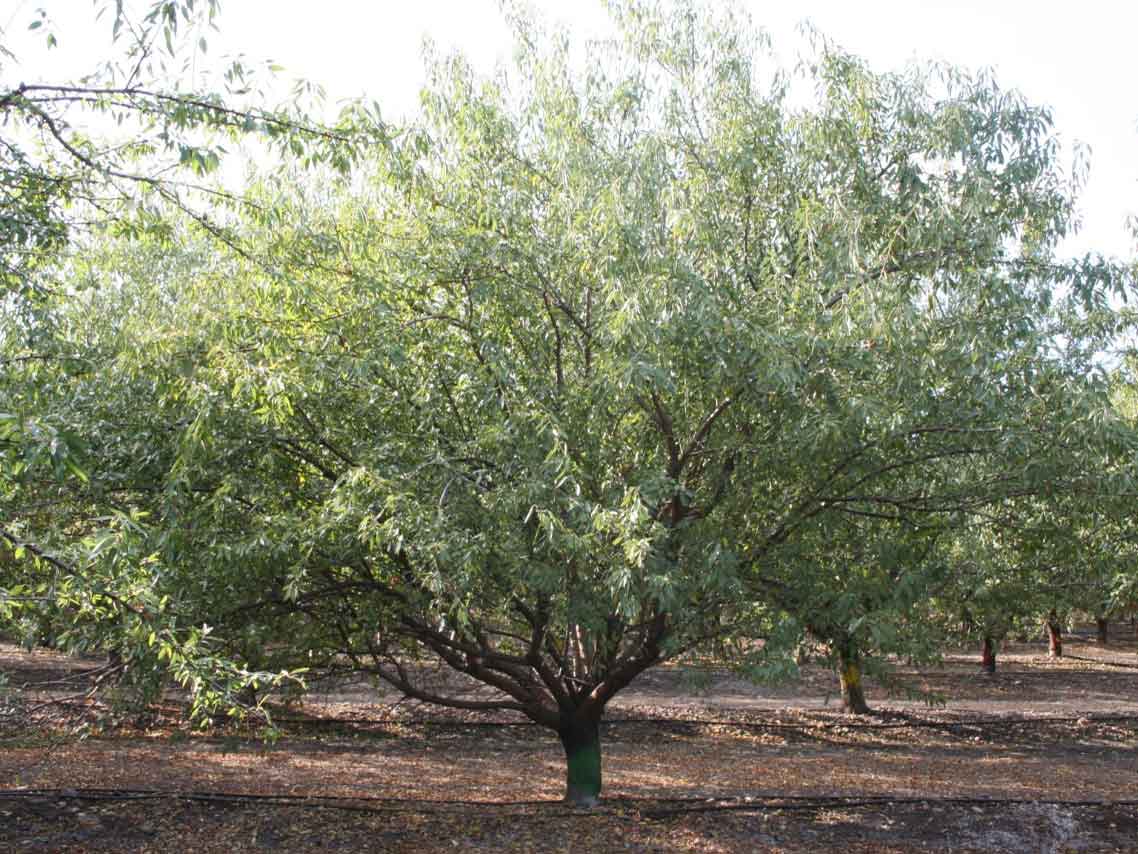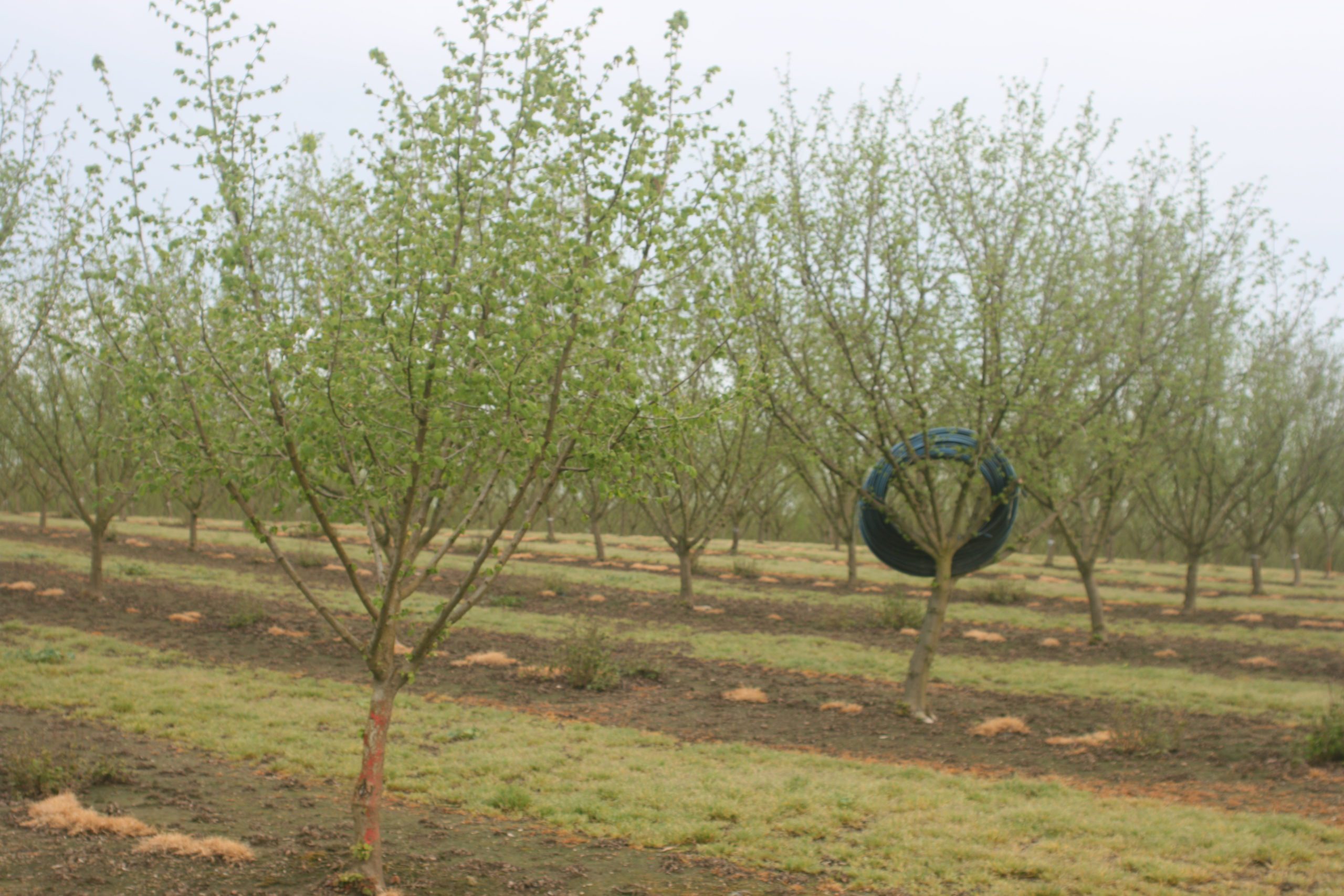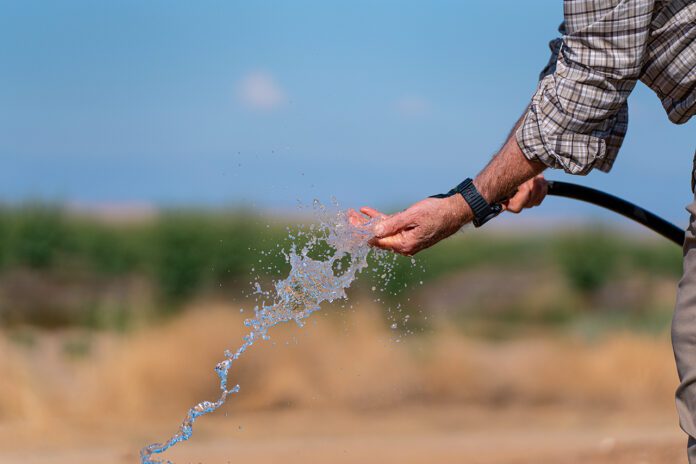
Listen to the audio version of this article. (Generated by A.I.)
Efficiency of an orchard irrigation system, particularly in a high-value tree nut crop, is the plan, but verifying that the level of efficiency desired has been achieved can be overlooked. A system’s efficiency is a measurement of how well the water applied to the crop matched crop water requirements.
Modern irrigation systems are designed for efficient use of water, but over time efficiency can be diminished by malfunction or leaks from the pump to the sprinkler heads. Water pumping costs, surface water delivery costs and labor costs are higher with an inefficiently operating system. Tree health and productivity can also become impacted when the system isn’t delivering the water, as well as nutrients. Lack of regular maintenance, leaks, mixed emitter sizes and plugged emitters account for many system inefficiencies.
Michael Roots, manager of Almond Board of California field outreach, and Curt Pierce, UCCE area irrigation and water resources advisor, listed five ways to know if your irrigation system is delivering the amount of water it is designed to deliver and meeting tree needs.
“It is important to be proactive and make sure all parts of the system are working as designed,” said Roots. “We are striving to have the most uniform system as possible.”
1. Distribution Uniformity
Distribution uniformity is a measure of the uniformity of a water application across an orchard. High irrigation efficiency requires high distribution uniformity.
A West Coast Nut article by former UCCE advisor Dani Lightle noted over the course of a season, system inefficiencies begin to occur. Run times increase and water use increases. All orchards with pressurized systems should have a maintenance routine to catch distribution issues. Regular flushing of lines and inspection of nozzles and emitters are necessary.
Roots said testing for distribution uniformity starts at the pump. Next in line are mainlines, submains and sprinklers. At any point there can be issues that affect distribution uniformity, Roots said. A full irrigation system evaluation will calculate the DU of the system and may identify issues that affect the DU. Verifying the DU involves testing locations along the main and lateral lines throughout the system, using a graduated cylinder and a stopwatch to measure the application rate at multiple different drip emitters or sprinklers, both near the water source and at the ends of the lines.
Pierce said depending on location, there are free system evaluations from Resource Conservation Districts. Thanks to several sources of funding, there are Mobile Irrigation Labs located in nearly all areas of the state. The Mobile Irrigation Lab is a free service that provides on-site evaluations of agricultural irrigation systems. The primary function of the MIL is to provide comprehensive reports to producers that detail how their irrigation system is performing, including tips, suggestions and recommendations based on data collected during the inspection.
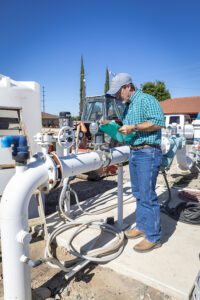
(all photos courtesy Almond Board of California.)
2. Pressure Testing
System pressure is key to distribution uniformity. All pressurized systems should have a maintenance routine to catch problems with wear and tear. That routine should include checking pressure regulators and flushing lines. Pierce said he sees a lot of improper system pressure, some caused by poor design or improper line size.
It is important to know what the system is designed to deliver, Roots said. System pressure is determined by the pump and what it can deliver. Keeping track of the system design can be a handy reference when questioning water output. Records of pump testing can also help pinpoint system issues.
ABC’s Almond Irrigation Improvement Continuum notes that the variability of the pressure measurements is an indicator of the uniformity of sprinkler discharge in the orchard. High variability between sprinkler pressures leads to overapplication of water in areas of higher pressure and underirrigation in areas of lower pressure.
3. Flow Meter Monitoring
Flow meters are used to show the amount of water being applied in an orchard and are critical to efficient water use. Roots said these devices are being required by some Groundwater Sustainability Agencies. Pierce cautioned that older devices are not entirely reliable. Older ones, particularly the propeller-driven models, need to be maintained to be accurate. The newer magnetic models will show a more accurate water output. The accuracy of the flow meter can be checked when pump testing is done.
4. Soil Moisture Monitoring
The important point here, Pierce said, is where monitors are placed. They can show an irrigation system is delivering the right amount of water, but not if they have been placed where they cannot do the job.
“They need to be placed in the orchard, not along the road,” Pierce advised. He said they also need to be placed in areas where there is soil variability and below effective root depth. Pierce said your system may be putting on the right amount of water, but if the tree cannot get to it in time, it indicates inefficiency.
5. Pressure Chamber
This tool basically asks the tree if it is receiving enough water by measuring plant water status. Pierce said it can also be helpful at the beginning of the irrigation season to determine when to start.
“This tool will let you know if the tree is good with soil water or if it is time to irrigate,” Pierce said. “It can keep you from overwatering and suppressing root growth.”
Roots noted that new technology is being developed to replicate what a pressure chamber does. Devices that measure sap flow in a tree can deliver data similar to a pressure chamber.
Adoption of new devices and attention to irrigation efficiency by almond growers is on the rise, Roots confirmed. The California Almond Stewardship Platform, led by the Almond Board of California, uses grower-submitted production information to demonstrate the sustainability of the almond industry. Roots said in the past few years, there has been more than a 40% increase in adoption of some level of new tools or technologies in irrigation management by almond growers.

Cecilia Parsons
Cecilia Parsons has lived in the Central Valley community of Ducor since 1976, covering agriculture for numerous agricultural publications over the years. She has found and nurtured many wonderful and helpful contacts in the ag community, including the UCCE advisors, allowing for news coverage that focuses on the basics of food production.
She is always on the search for new ag topics that can help growers and processors in the San Joaquin Valley improve their bottom line.
In her free time, Cecilia rides her horse, Holly in ranch versatility shows and raises registered Shetland sheep which she exhibits at county and state fairs during the summer.








